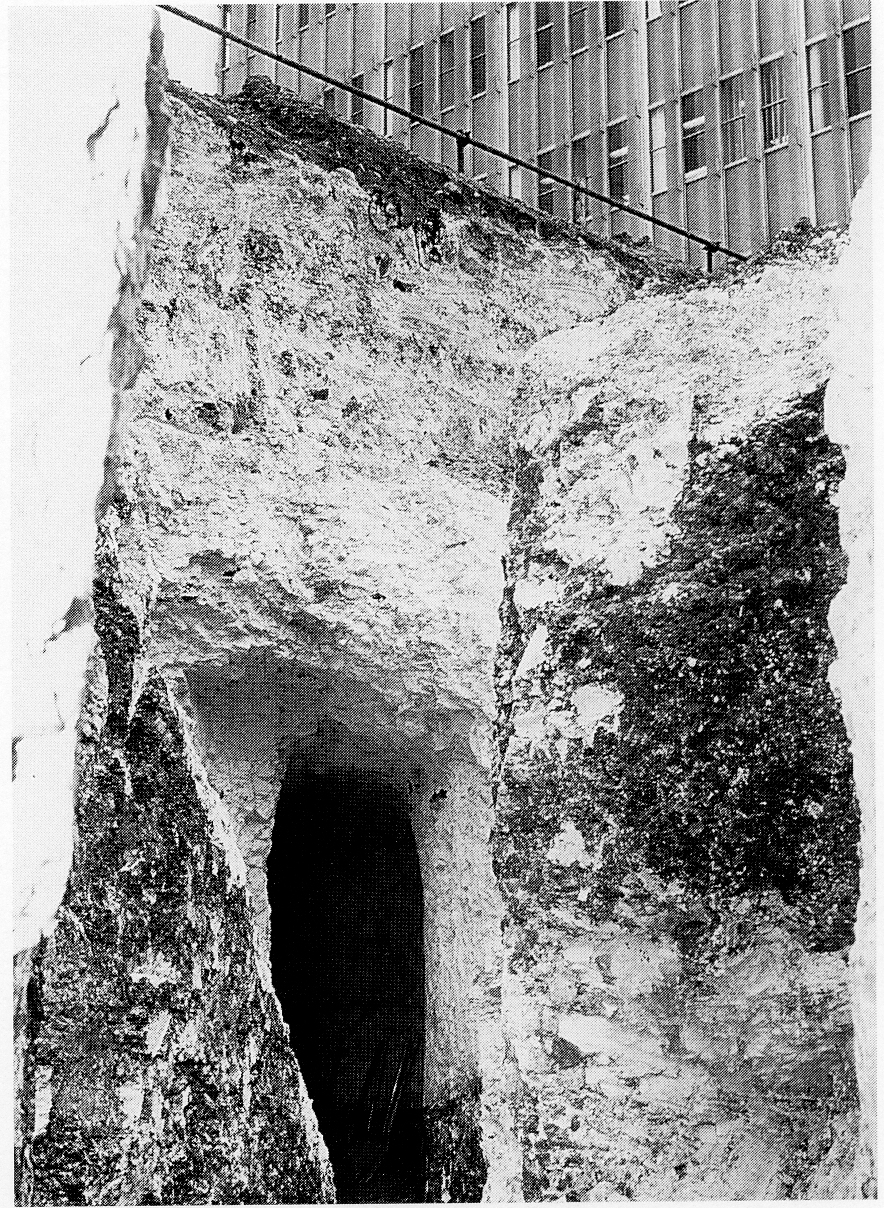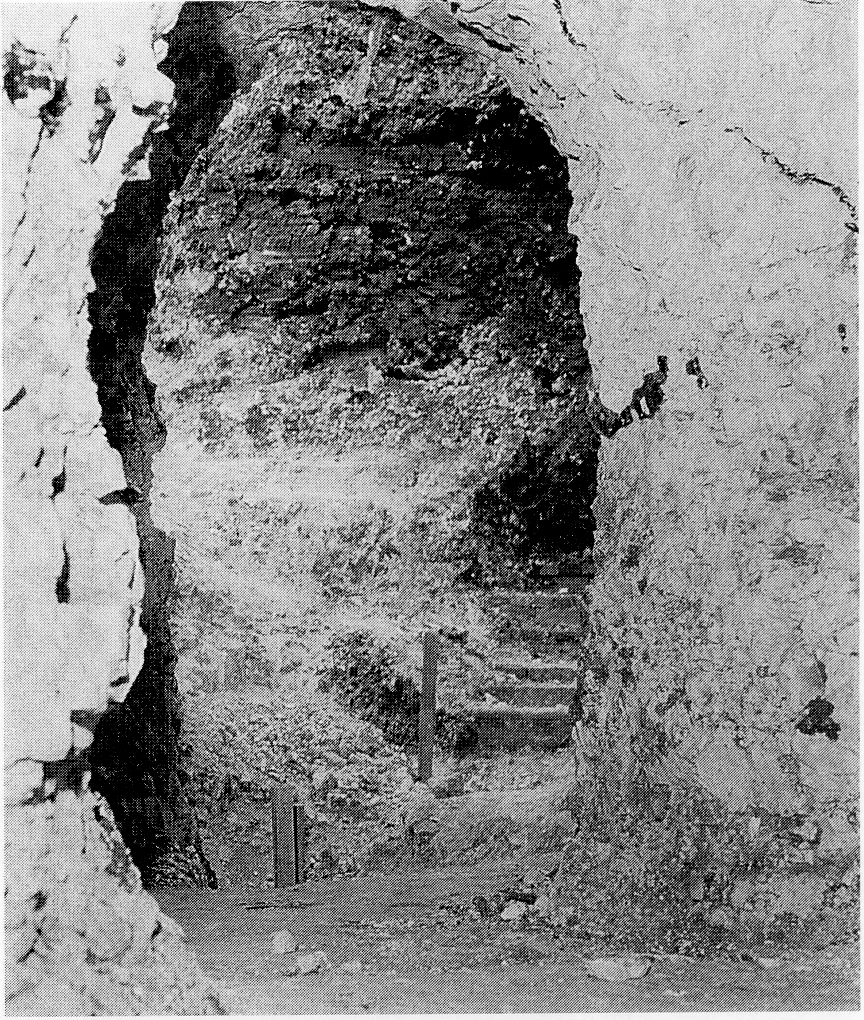Tunnels at Hursley
For over 200 years there have been stories concerning the existence of tunnels in and around Hursley Park. Some of these stories are clearly fanciful, though there is enough evidence of some real tunnels to see What could have inspired some of the tales.
 Diagram of C Block tunnel system
Diagram of C Block tunnel system
Stories of tunnels extending over 200 yards or metres in length have to be treated with considerable scepticism, especially when balanced against both the enormous amount of excavation work and the associated problems in maintaining secrecy that would have been involved.
To date we know about three certain tunnel systems in the area, and one possible and two very dubious tales concerning long tunnels, one of which was said to run from the well at Merdon Castle to a well in Hursley village, and the other from the Park House to the church or one of the houses in the village.
The first dubious claim of a tunnel is a nice piece of folklore about a duck that fell into the well at Merdon Castle (remember it is about 300 feet (90 m) deep) and turned up in a well in Hursley village a day or two later minus some of its feathers — a straight line distance of over 0.62 miles (1 km)! When the Castle well was explored in the early part of this century, no tunnel or anything resembling such was found, either above or below the water line, only a great number of pins, an ashen wood maser bowl and debris.
The second fable concerned a tunnel said to run from the House to the village, and has been disproved by all the deep excavation work between the Park House and the Village. This would have cut through any such system but did, in fact, find some tunnels that went absolutely nowhere.
Of the three known tunnel systems, the one which was by far the most interesting and puzzling involved a system found when the footings for C Block were being excavated. (See illustration on opposite page.) It consisted of three loops of tunnels linking together in a triangular form, with the two larger loops joining into a common gallery 56 feet (17 m) long and furthest in. The floor level descended to about 24 feet (7.25 m) below ground level from the entrance. The drawing shows passing or possibly defence bays up to 8 feet (2.5 m) in diameter, and an average tunnel width of just over 3 feet (1 m), with a height of 10 feet (3 m).
 Opening into C Block tunnels, with old B
Block in the background.
Opening into C Block tunnels, with old B
Block in the background.
The assumption that this was an unfinished ice house is highly unlikely; the design and proportions did not fit and would have represented a lot of unnecessary work. Also whatever the tunnels were intended for, they had all the appearances of having been finished.
One conjectured impression is that it was a decoy and a trap, probably constructed in Cromwellian times. Assuming that pursuers were expected, those being hunted could go to a separate temporary safe hiding place, knowing that the entrance to the tunnels would be found before their temporary hiding place was discovered. Once the pursuers had gone down and started going round in circles, losing their sense of direction, the escapers could block the entrance and make their getaway. As no human bones were found, could we assume it was never put to the test?
Another possibility is that this was the real hiding place, and should the pursuers find it, then the layout would be confusing to them, and those hiding could readily defend themselves inside the system.
It was always a puzzle to the gardeners at Hursley why a particular part of the walled garden would occasionally and suddenly subside, requiring a load of top soil to restore the level. This was the answer, as the steps leading down into the tunnels started at this point.
 Original steps down to C Block tunnels
Original steps down to C Block tunnels
Around the perimeter of Hursley House, with a spur going out under the stables, there is a service tunnel that was constructed of brick in 1902/03 when the House was extended and remodelled for Sir George Cooper. The spur was to take the sewage out to the cesspools adjacent to the Hursley Park Cricket Field, now the site of a copse. These cesspools were in use up to the early sixties, and one assumes that they were well constructed and covered over, as no mention is made of a unique aroma in the Hursley Park Cricket Club records. This perimeter tunnel to the House is now a valuable feature for network and other cables to serve the House, out of sight but accessible.
The last known tunnel is one that is believed . to have run from the King’s Head public house in Hursley village to the lych-gate cottage by the church. The only evidence for this are the now bricked up ends visible in the respective cellars. What state the tunnel is in between the blocked up ends, or why it was constructed, is not known.
The tunnel with unsubstantiated evidence of existence is said to be on the north side of Merdone Castle, and under the road that runs from Lower Standon Farm on the Winchester to Romsey Road, and goes to Farley Chamberlain, Slackstead and on to Braishfield. The road once had the name of Feather Bed Lane, probably because its earlier unmade surface was anything but. The evidence comes from the observation of steam roller drivers, who identified a place where a tunnel could be sited from the tonal change in the rumble the rollers made over the road’s surface, normally associated with a culvert or similar passage under a road. The near silent operation of steam engines allowed the drivers of steam rollers to hear more clearly any change in the tone of the rollers' rumble over the road surface than would be possible with later internal combustion engined road rollers. That this tunnel went all the way to Oliver’s Battery, a distance of about 4 miles or 6.5 kilometres, makes a nice story but does classify it in the fanciful bracket. This fable may, though, be a clue to there once being a well hidden track to that part of Winchester’s outskirts, where a tunnel could have formed a link at the castle end. The close proximity of the castle has naturally led to the assumption that this tunnel, if it exists at all, went right into the castle. To do this it would have to descend some 60 feet (18 metres) to get under the dry moat, with a similar climb up to the castle’s inner circle ground level again. Also such a route for the tunnel would make it a perfect sump for any water seeping through, and render it impassable at different times, with the moat itself naturally directing any surface water to where it would add to the problem.
It is doubtful, even after the passage of time, that other ‘passages of time’ will be found in Hursley Park. Stories of tunnels are part of Hursley’s folklore, and in one case did provide an obscure clue to the existence of the tunnels that went nowhere. Hopefully the steam roller clue will at some time be checked out to see if there really is a tunnel adjacent to Merdone Castle, and where it started and finished.